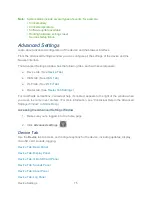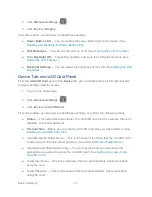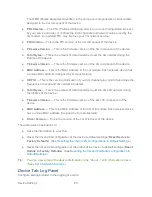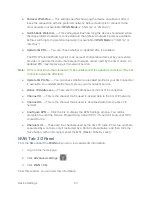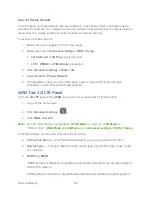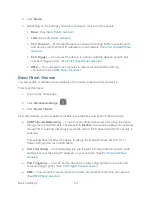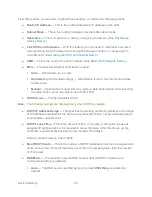
Device Settings
85
1. Log in to the home page.
2. Click
Advanced settings
(
).
3. Click
WAN > 4G
.
Note:
4G information is not available if
WAN Mode
is “3G Only or
4G Mode
is “LTE Only.”
(
WAN Mode
and
4G Mode
are in
Advanced settings > WAN > Setup
.)
From this window, you can view this 4G information, or perform the following actions:
●
Connection Status
— This field reflects whether you are connected to 4G.
●
Service Type
— This field reflects the 4G service type: 4G, 4G Off, power save mode,
or no service.
●
Scan for Private Network
— Click this link if you have been informed that a private
network might be available to you. (See “Scan for Private Network” in
WAN Tab: 4G
Panel
.)
●
RSSI
and
CINR
.
RSSI reflects the signal strength of the network.
CINR stands for Carrier to Interference-plus-Noise Ratio and is a measurement of signal
effectiveness. For the receiver to decode the carrier signal, the latter must be in an
acceptable CINR range.
●
TX Power
— This number indicates the transmitter power. A higher number is better.
●
Center Frequency
— This number indicates the frequency of the 4G channel used for
the data connection.
●
NSP-ID
— This number is the ID of the 4G Network Service Provider.
●
NAP-ID
— This number is the ID of the 4G Network Access Provider.
●
BSID
— This number is the ID of the Base Station.
●
Preamble
— This number is the preamble ID of the current base station that the modem
is listening to.
●
Realm
— This login address is used for 4G service (user@realm).
●
Certificate Information
— Click the link to display information in a popup window. You
will be prompted to enter the Service Programming Code (SPC). (If you don't know your
SPC, contact Sprint.)





